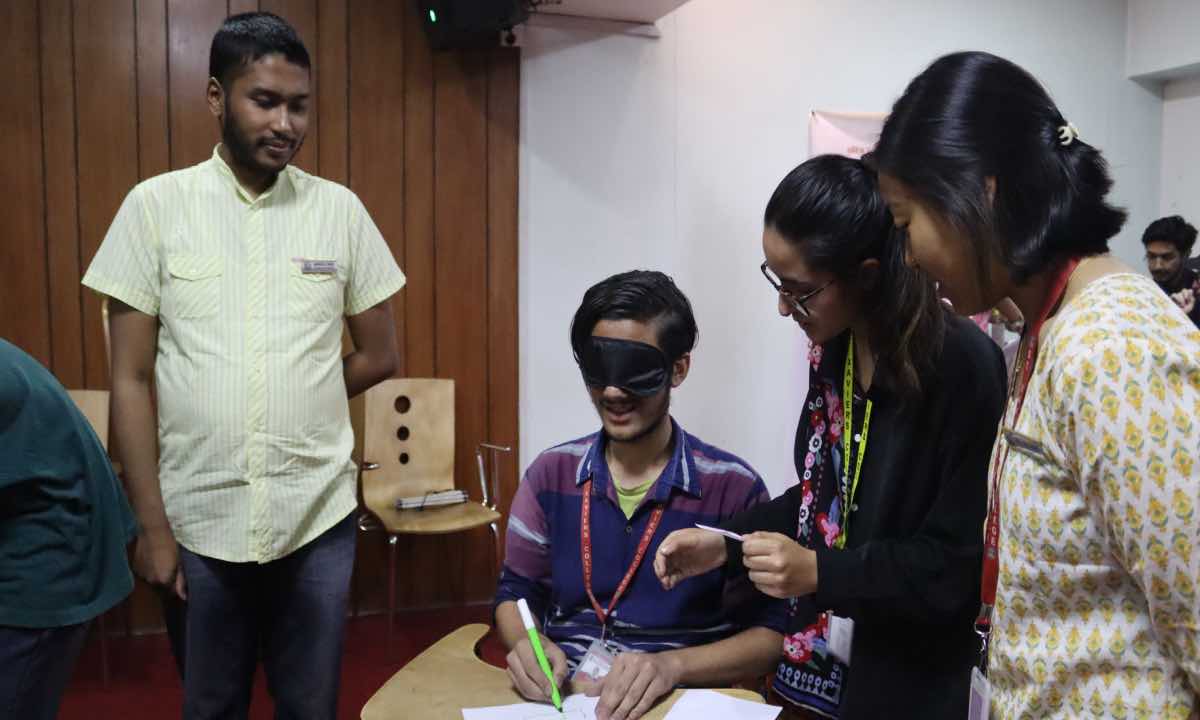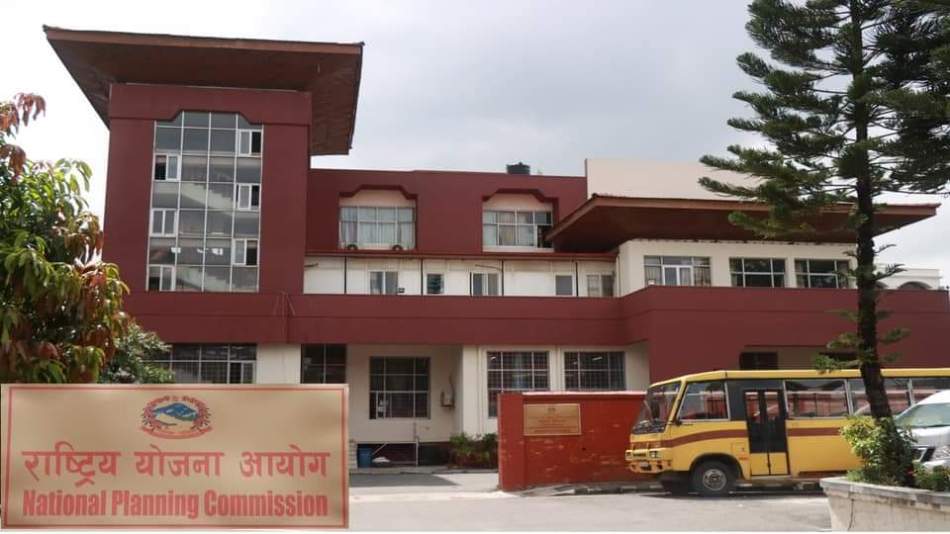
OR
Opinion
Down Syndrome: An Understanding through Prenatal Screening Tests
Published On: January 11, 2022 06:30 AM NPT By: Sandeep Thapa


Sandeep Thapa
The author is Research Officer at Kathmandu Center for Genomics and Research Laboratory (KCGRL)news@myrepublica.com
Prevention of Down Syndrome depends upon offering a prenatal diagnosis to high-risk pregnancies via amniocentesis and chorionic villus sampling (CVS). Amniocentesis and CVS are quite reliable but provide the risk of a miscarriage of between 0.5 to 1%.
Down syndrome (DS) is one of the most leading causes of intellectual disability occurring chromosomal abnormality in humans and affecting between 1 in 400-1500 babies born in different populations. Millions of these patients face various health issues including learning and memory, congenital heart diseases (CHD), Alzheimer’s diseases(AD), leukemia, cancers, and Hirschsprung disease (HD).The incidence of births of children with DS increases with the age of the mother. However, due to higher fertility rates in younger women, the probability of having a child with DS increases with the age of the mother and more than 80% of children with DS are born to women under 35 years of age.
Prenatal screening tests are a set of procedures that are performed during pregnancy on expectant mothers to determine whether a baby is likely to have specific birth defects. Most of these tests are noninvasive. They’re usually performed during the first and second trimesters, although some are performed during the third.
A screening test can only provide your risk, or probability, that a particular condition exists. When the results of a screening test are positive, diagnostic tests can provide a definitive answer.Screening for Down syndrome is offered as a routine part of prenatal care. Although screening tests can only identify your risk of carrying a baby with Down syndrome, they can help you make decisions about more-specific diagnostic tests.
Screening tests include the first trimester combined test and the integrated screening test.
The first trimester combined test
The first trimester combined test, which is done in two steps, includes:
· Blood test. This blood test measures the levels of pregnancy-associated plasma protein-A (PAPP-A) and the pregnancy hormone known as human chorionic gonadotropin (HCG). Abnormal levels of PAPP-A and HCG may indicate a problem with the baby.
· Nuchal translucency test. During this test, an ultrasound is used to measure a specific area on the back of your baby's neck. This is known as a nuchal translucency screening test. When abnormalities are present, more fluid than usual tends to collect in this neck tissue.
Using the age and results of the blood test and the ultrasound, one can estimate your risk of having a baby with Down syndrome.
Integrated screening test
The integrated screening test is done in two parts during the first and second trimesters of pregnancy. The results are combined to estimate the risk that your baby has Down syndrome.
· First trimester. Part one includes a blood test to measure PAPP-A and an ultrasound to measure nuchal translucency.
· Second trimester. The quad screen measures your blood level of four pregnancy-associated substances: alpha-fetoprotein, estriol, HCG, and inhibin A.
DOWN SYNDROME (DS): Down Syndrome (DS) is a severe, common, and complex genetic disorder with substantial medical and social costs. The most common cause of having a DS baby is the presence of extra copy chromosome 21, resulting in trisomy. DS or Trisomy 21, is the most common chromosomal abnormality among live-born infants, is associated with several congenital malformations appearing in about 1 in 400-1500 newborns. It is coupled with several phenotypes, including congenital heart defects, leukemia, Alzheimer's disease, gastrointestinal anomalies,weak neuromuscular tone, dysmorphic features of the head, neck, and airways, hematopoietic disorders, and a higher incidence of other medical disorders.However, each person with Down syndrome is a unique individual and may possess these characteristics in different degrees or not at all. There are many medical conditions associated with Down syndrome; however, due to recent medical advances, there have been improvements in their health and longevity.
INCIDENCE:
As many as 350 cases of Down's syndrome have been registered at Down's Syndrome Society Nepal (DSSN), an NGO that works to support children with Down's syndrome that was reported a few years ago. The number of cases has been on the rise. However, there is no accurate record of persons with Down's syndrome, according to Dr. Nilam Thakur, consultant clinical geneticist from the National Academy of Medical Sciences (NAMS), Bir Hospital, Kathmandu Nepal.
DIAGNOSTIC METHODS:
Prevention of DS depends upon offering a prenatal diagnosis to high-risk pregnancies via amniocentesis and chorionic villus sampling (CVS). Amniocentesis and CVS are quite reliable but provide the risk of a miscarriage of between 0.5 to 1%. Based on soft markers like small or no nasal bone,large ventricles, and nuchal fold thickness, the risk of DS for the fetus can be identified through ultrasound generally at 14 to 24 weeks of gestation. Increased fetal nuchal translucency indicates an increased risk of DS. The other methods used for prenatal diagnosis in which traditional cytogenetic analysis is still widely used in different countries like Nepal.
Moreover, some rapid molecular assays- FISH (fluorescent in situ hybridization), QF-PCR (quantitative fluorescence PCR), and MLPA (multiplex probe ligation assay)- also are used for prenatal diagnosis of DS.
SCREENING METHODS:
Screening for DS is an essential part of routine prenatal care. The most common screening method involves the measurement of a combination of factors: advanced maternal age, multiple second-trimester serum markers, and second-trimester ultrasonography.
Noninvasive Prenatal Test
The technological advancement of recent years has introduced another screening test for Down syndrome, the non-invasive prenatal test, which is one of the major innovations in obstetrical care. By amplifying, counting, and comparing the cell-free fetal DNA (cffDNA) fragments in the maternal blood, it is now possible to screen for trisomy 21 to a very high degree of accuracy. The high cost of the test at present precludes it from being adopted as a first-line screening test. As in other screening tests, NIPT also needs to be validated within our population before widespread adoption can be prescribed.
Next-generation sequencing (NGS) is used to analyze cffDNA in maternal plasma. With its high levels of sensitivity and accuracy, NGS produces the data quality needed for reliable analysis of the trace amounts of cell-free fetal DNA (cffDNA) found circulating within blood plasma.
Maternal serum screening
Biochemical markers are used to estimate a pregnant woman's risk of having a fetus/child with Down syndrome, thereby allowing her to make an informed choice about invasive diagnostic testing, which is costly and associated with a small risk of pregnancy loss. A variety of serum markers are used to screen for Down syndrome in the first and second trimesters.
In the prenatal quadruple test, a maternal screening, the levels of four analytes in maternal serum are used to calculate the risk of Down Syndrome (Trisomy 21)
The triple marker screen test, also known as the triple test, is a maternal blood screening test that looks for three specific substances: alpha-fetoprotein (AFP), human chorionic gonadotropin (HCG), and estriol in maternal serum. It is used to calculate the risk of Down Syndrome (Trisomy, 21). Additionally, the quadruple test is similar to that of the triple screen test, where along with three substances, another substance, Inhibin- A, is evaluated, which is performed in the second trimester.
Ultrasonography
The health care provider does an ultrasound test, which uses high-frequency sound waves to create images. An ultrasound can detect fluid at the back of a fetus's neck, which sometimes indicates Down syndrome. The ultrasound test is called the measurement of nuchal translucency.
Furthermore, a combined test is also called an integrated analysis). This approach uses both a blood test and an ultrasound during the first trimester as well as a second-trimester blood test that results in more effective or comparable detection rates.
SOME REASONS FOR CHOOSING A PRENATAL TEST INCLUDE
a) ADVANCED AWARENESS: Some parents would like to know as soon as possible if their fetus has Down syndrome so that they could make preparations (like informing other family members and doing research on Down syndrome) before the birth.
b) ADOPTION: Some parents would like to receive a prenatal diagnosis so that they could make arrangements for adoption if their fetus were to have Down syndrome.
c) TERMINATION: Some parents want to have a prenatal diagnosis so that they can discontinue their pregnancy.
SCENARIO IN NEPAL:
(Awareness About Screening Versus Diagnostic Tests)
The lay public who are the end-users of the screening program may hardly be aware of the differences between a screening test and a diagnostic test. A screening test, such as the combined test for Down syndrome, only categorizes women into high and low risk and can never confirm a fetus as having Down syndrome. The purpose of a screening test is only to identify a subset from the screened population to whom the diagnostic test (e.g., chorionic villus sampling/amniocentesis) needs to be offered. A positive screening test should never be equated to an affected fetus.
These are fundamental concepts that need to be informed in an understandable way to the patient before performing the test (pre and Posttest counseling).Few hospitals and practitioners make an effort to provide meaningful pretest counseling.
MANAGEMENT OF THE DISEASE:
There is no medical cure for DS. However, children with DS would benefit from new medical support and developmental intervention initiation during childhood. Children with DS may benefit from speech therapy, physical therapy, and work-related therapy. They may receive special education and assistance in school. Life expectancy for people with DS has improved noticeably in recent decades. Nowadays, cardiac surgery, vaccinations, antibiotics, thyroid hormones, leukemia therapies, and anticonvulsive drugs (e.g., vigabatrin) have significantly improved the quality of life of individuals with DS. Life expectancy that was hardly 30 years in the 1960s is now increasing more than 60 years of age.DS child should have a regular checkup from various consultants. These include:
Clinical geneticist - Referral to a genetic counseling program is highly desirable
Developmental pediatrician
Cardiologist - Early cardiologic evaluation is crucial for diagnosing and treating congenital heart defects, which occur in as many as 60% of these patients
Pediatric pulmonologist -Recurrent respiratory tract infections are common in patients with DS
Ophthalmologist
Neurologist/Neurosurgeon – As many as 10% of patients with DS have epilepsy; therefore, a neurologic evaluation may be needed
Orthopedic specialist
Child psychiatrist - A child psychiatrist should lead to liaison interventions, family therapies, and psychometric assessments
Physical and occupational therapist
Speech-language pathologist
Audiologist
THE CHALLENGE:
In Nepal, many parents do not have access to essential information on Down syndrome, related health conditions, and early development issues. They are unable to provide their children with the support they need to stay healthy and develop to their full potential. People with Down’s syndrome usually have trouble learning and are slower to learn how to talk and take care of themselves. But despite these challenges, they can go to school, get a job, and lead a normal, happy life.In Nepal and beyond, many mistakenly believe Down’s syndrome is a disease. More awareness is needed to educate people around the syndrome – and whilst there is always a helping hand, one must have the strength and courage to reach out for it.Since various clinical conditions are associated with DS, hence the management of these patients requires an organized multidisciplinary approach and continuous monitoring of these patients.
You May Like This

Govt. to give compensation for losses caused due to lumpy skin disease
KATHMANDU, Aug 29: The National Development Action Committee has decided to sort out the issues of electricity wire, telephone cable... Read More...

Valley CDOs decide not to allow gatherings of over 25 people at public places
KATHMANDU, Jan 11: Gathering of more than 25 people have been banned in public places to prevent and control the... Read More...

Noncommunicable disease prevention program starts from Kailali
DHANGADI, Oct 5: The government has launched a special program from Kailali for the prevention and control of noncommunicable diseases. Read More...






Just In
- Lungeli appointed as Minister for Labor and Transport in Madhesh province govt
- Bus knocks down a pilgrim to death in Chitwan
- One killed in tractor-hit
- Karnali Chief Minister Kandel to seek vote of confidence today
- Chain for Change organizes ‘Project Wings to Dreams’ orientation event for inclusive education
- Gold price decreases by Rs 200 per tola today
- National Development Council meeting underway
- Meeting of Industry, Commerce, Labor and Consumer Welfare Committee being held today













Leave A Comment